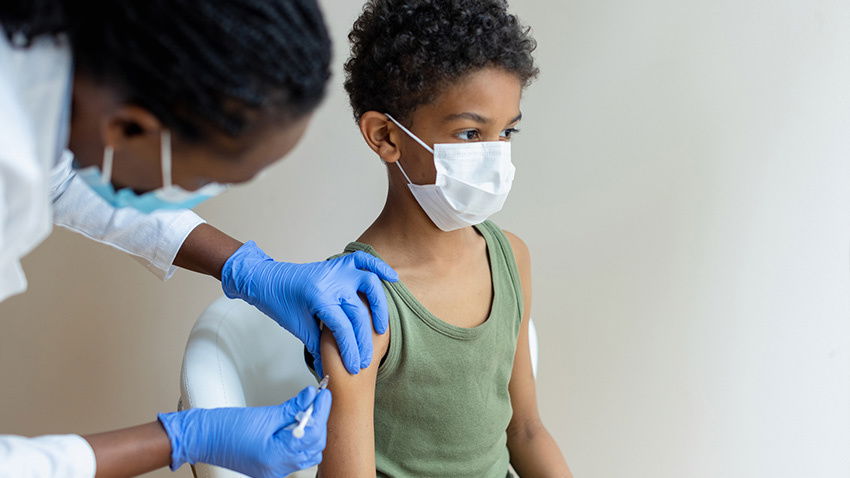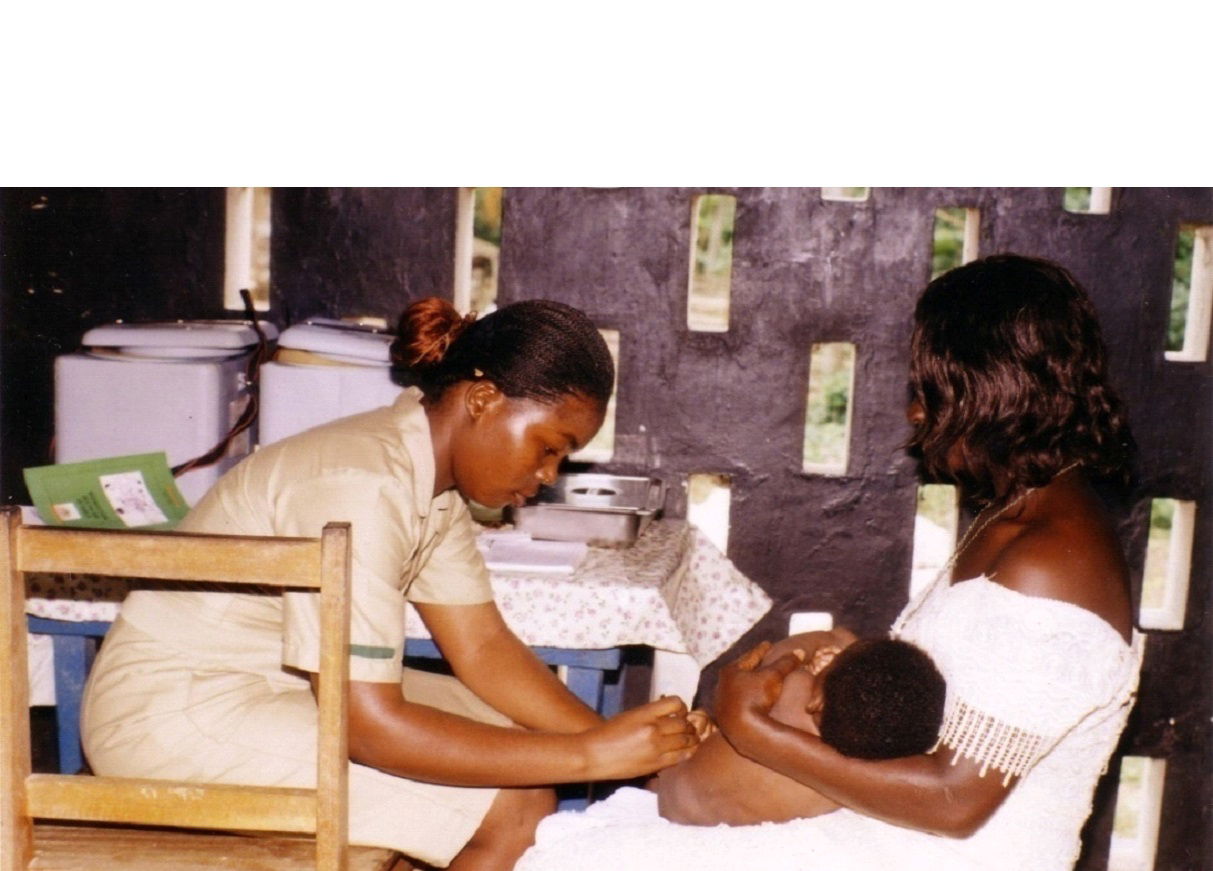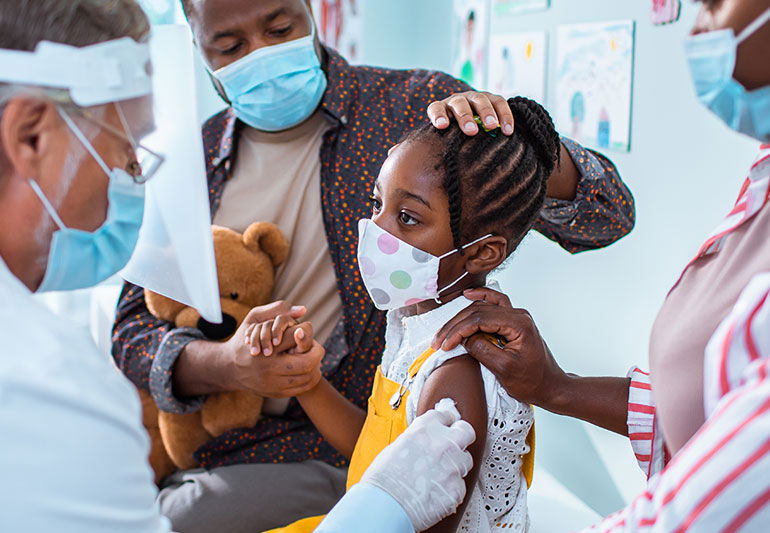Definition – immunization is the process of stimulating an active immunologic defense in preparation of meeting the challenge of future exposure to diseases (Bullough and Bullough, 1990).
Thus it is the introduction of weakened, live or dead micro-organism called vaccines to the body system to stimulate the production of the antibodies to confer immunity. In other words, immunization consists of the administration of a modified or attenuated product of a micro-organism to mimic natural infection and evoking an immunologic response that presents little or no risk to the recipient.

The recommended doses, routes, techniques of administration and schedules for every country’s programme must be followed for predictable effective immunization.

Vaccines – a vaccine is a suspension of antigens in a base. Vaccines are either made from the organisms which are dead (as in DPT / HibHepB) or live but made harmless (attenuated) as in measles, BCG and OPV, or toxoid which relates to the toxins or poisons produced by the organism which do no damage but protect the body.
All antigens are weak to cause the real disease but have the ability to stimulate the body to produce antibodies to confer immunity in the individual. Some vaccines give permanent immunity and others semi-permanent, but long lasting protection. Vaccines come in vials and ampoules.

The Expanded Program on Immunization (EPI)
The Expanded Programme on Immunization (EPI) is a programme instituted by the WHO to be followed by all member countries including Ghana. This programme aims at achieving 70 – 80% coverage on vaccine preventable disease in children from 0 - 5 years. The purpose is to reduce the number of diseases and deaths that occur from vaccine - preventable diseases. The target for Ghana has been 80% coverage.
The WHO supported by UNICEF provide technical advice, money, and other equipment for member countries in immunization activities. Each country needs a national policy to ensure that all children and adults at risk receive immunization.
According to Bradley (1990), the plan needs to be a national one for the following reasons:
⦁ It costs money to organize, administer, provide vaccines, manage the “cold chain” system, transportation and other equipment.
⦁ Information on the need for immunization must reach every one in the country.
⦁ Health education on immunization must be organized as a priority, using many different methods of communication.⦁ Personnel must be trained and be available to administer and carry out the immunization and maintain proper care of the vaccines and equipment.
⦁ Immunization needs to be provided within the reach of all.
⦁ There should be no import taxes or restrictions on vaccines and equipment.
The Recommended Schedule Of Immunization Considers:
⦁ which immunizations are necessary
⦁ the age of starting the immunization
⦁ the order in which they are given
⦁ the route of administration
⦁ the doses and intervals
Modes of Rendering Immunization Services
⦁ Statistic or fixed facilities (Health Centres and Clinics) where immunizations are given everyday or on weekly basis.
⦁ Outreach points where immunization is given at specific periods of the month by clinic staff who visit those points. These sessions are usually run on monthly basis.
⦁ Mobile teams also travel to areas that are difficult to reach for regular immunization services.
⦁ Intensive programmes such as Mass, National Immunization Days (NIDs) and Child Health Days (CHD’s) where all children under 5 years are immunized.
⦁ House- to-house immunization in CHPS zones.
⦁ Immunizations are also given in institutions like Day - Care Centres and during School hygiene inspection.
Before any immunization session, the following tasks need to be performed:
⦁ Determine the number of children to be immunized in a month.
⦁ Determine how often to conduct the immunizations.
⦁ Determine the catchment areas that need to be covered within a month.
⦁ Determine a day that would be convenient for the clients.
KINDLY WATCH THE BRIEF EDUCATIVE VIDEO:
COMMON VACCINES (ANTIGENS)
1. BACILLUS CALMETTE GUERIN (BCG) VACCINE
2.ORAL POLIO VACCINE(OPV)
3. DPT/HIBHEPB(FIVE-IN-ONE VACCINE OR PENTAVALENT)
4.MEASLES VACCINE
Evaluation of Imsmunization Programmes
Everybody who works during immunization programme needs to evaluate his / her work. This could be a manager or a service provider.
Purpose of evaluation is to:
⦁ Know how successful work has been
⦁ Identify what you need to do.
⦁ Improve on your programme
⦁ Identify what help you need from your supervisors.
What to EvaluateAccording to the field guide for The Ghana immunization Programme, one should ask these questions:
⦁ Did you hold all immunization sessions as planned?
⦁ Did you have enough vaccines to reach at your target?
⦁ Did you check your refrigerator everyday to record the temperature?
⦁ Were your temperatures recorded in safe ranges?
⦁ Did you check the immunization status of all children and women in child bearing age?
⦁ Did you inform them about the immunizations that they will need and when to have them?
⦁ Did you have enough needles and syringes as well as other equipment?.
Kindly Subscribe to receive More informative and Relevant News,Exciting and Educative Notifications to your Ultra Modernized Devices from Xquisittrends.com.
Thankyou for the Scheduled Quality Ample Time.

